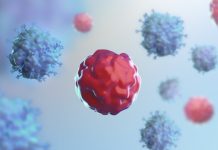
In this article, financial journalist Marc Davis discusses the mass production of psychedelic pharmaceuticals and the steep educational curve facing medical science.
Medical science is on the cusp of making some extraordinary evidence-based breakthroughs in addressing the pandemic-induced global mental health crisis. This is thanks to the advent of a novel new class of pharmaceutical drugs made from psychedelic plants and fungi. These extraordinary botanical disruptors have demonstrated tremendous promise in the treatment of chronic depression.
However, what hardly anybody is discussing in the media is the daunting challenge of developing enough of these standardised organic compounds to ultimately treat a billion or more people worldwide for a diversity of mental health issues.
Large-scale production of psychedelics
Truth be told, it is expensive and complicated to isolate the active ingredients in multi-compound organic substances. This has never been done before on a large-scale anywhere in the world. This is due to two key factors. The first involves the technological and logistical challenges of mass producing these plants and mushrooms to be easily replicable in large numbers in terms of their potency and chemical consistency. This still represents a steep educational curve for medical science.
For example, the variability in the quantity and quality of the active psychedelic molecules found in Mother Nature’s dozens of different kinds of “magic mushrooms” currently makes it difficult to produce uniform doses for clinical treatments. The same rationale can also apply to psychedelic plants, such as peyote and San Pedro cacti.
Limited knowledge
The second obstacle to the mainstreaming of psychedelics as medicine has been the fact that they were off-limits to scientists until recently, dating back to the early 70s. This was due to their highly restricted legal designation as drugs that are likely to be misused and which offer no medical efficacy.
In spite of this decades-long psychedelics prohibition, societal barriers to accepting psychedelics as respectable forms of medicine are finally falling away. Hence, drug laws have been loosened to allow for some clinical studies into these extraordinary botanicals Even the US Food and Drug Administration is now proving to be very supportive of clinical research.
Accordingly, there are now an estimated 200 biotech start-ups in North America and Europe that are vying for a piece of the looming multi-billion-dollar market for legal psychedelic pharmaceuticals and other psychedelic therapies. Most of these contenders are experimenting with the psilocybin that is found in magic mushrooms and used to treat severe, treatment-resistant depression, as well as other conditions.
Yet, there is already a supply bottleneck in the availability of pharmaceutical-grade psilocybin for experimenting with. Consequently, medical researchers are currently paying on average US $7,000-$10,000 per gram (about £5,000-£7,000).
Some medical researchers are even struggling to gain access to any legal supplies at all, regardless of cost. This reality may yet make it increasingly challenging for enterprising medical researchers to continue or to commence conducting R&D work.
Vying to become psychedelics-producing powerhouses
Several leading biotech innovators are rising to the challenge of producing psychedelic compounds on an industrial scale in order to facilitate more laboratory-based research and to create their own mood-modifying pharmaceutical therapies.
They include the industry’s flagbearer company, London-based Compass Pathways PLC. This start-up has developed and patented a new method of isolating psilocybin through chemical synthesis. In essence, the company’s scientists are generating pure psilocybin without having to cultivate any mushrooms. This creates the opportunity for much higher yields than with cultivation, which requires the growing of large numbers of uniformly-composed magic mushrooms in a highly controlled environment.
Another lesser-known contender that is taking a slightly different approach to the industrial-scale production of psychedelics is Vancouver-headquartered XPhyto Therapeutics Corp. This small biotech innovator is pioneering the industrial-scale production of psychedelic active pharmaceutical ingredients (APIs), including psilocybin and mescaline.
What comes next offers an intriguing twist on producing APIs at scale. The company intends to incorporate both chemically-synthesised and biosynthesised psychedelic molecules into “novel” delivery methods, namely oral/transmucosal (sublingual) strips.
This delivery system ensures a consistent and replicable drug dosage that goes directly into the bloodstream. Most drugs that are delivered via this method are shown to have high bioavailability. They also provide a fast onset and a more predictable level of efficacy because they do not need to be metabolised by the liver – a very inefficient and unpredictable means of absorbing pharmaceutical drugs.
Much of this downstream innovation of newly-formulated psychedelic APIs will take place at an EU-GMP-certified laboratory in Baden-Württemberg, Germany. This is home to Vektor Pharma TF GmbH, which is a specialised developer and manufacturer of narcotic formulations. It is wholly-owned by XPhyto Therapeutics.
Vektor Pharma has considerable commercial expertise in developing such unorthodox drug formulations for the delivery of powerful drugs like fentanyl and Naloxone to treat severe pain. Notably, these are highly addictive opioids that must be judiciously administered in extremely precise measures.
In Canada, XPhyto’s psychedelics Research and Development (R&D) programme is led by German-born Professor Dr Löbenberg. He is one of the few medical scientists in North America who has the regulatory approval to experiment with the most highly regulated of all Schedule I psychedelics in a university laboratory setting. He holds Health Canada licences to do R&D with the most highly restricted of all drugs, which include LSD, mescaline, psilocybin, and MDMA.
As a founder and director of the Drug Development and Innovation Centre at the University of Alberta and the former president of the Canadian Society for Pharmaceutical Sciences, Professor Löbenberg has many years of expertise in pharmacology.
He is currently expanding his laboratory at the University of Alberta campus in Edmonton to include more R&D capacity, as well as to accommodate an expanded team of medical scientists. This is where he and his new associates intend to fully synthesise isolates from psychedelic compounds at an industrial scale.
In turn, Vektor Pharma will be tasked with the challenge of incorporating these pharmaceutical-grade ingredients into standardised formulations that are precise and predictable in their onset. XPhyto is initiating pre-clinical laboratory work with a focus on highly restricted psychotropic compounds including psilocybin, mescaline, LSD, MDMA and DMT.
All of these chemical compounds are known to modulate the levels of serotonin and dopamine in our brains. These neurotransmitters are key to regulating our mood, cognition, and perception. When they are out of balance, a whole cascade of mental health issues can arise, especially depression and chronic anxiety. Psychedelics are believed to restore normalcy in the brain’s chemical activity.
The dire need for new mood-modifying drugs
The total direct and indirect costs of society’s mental health epidemic is literally trillions of dollars a year, according to the World Economic Forum. According to the Lancet Commission, this number is destined to rise as high as US $16trn within the next few years when factoring in loss of productivity, as well as spending on social welfare, education, and law and order.
Despite the vast amounts of money being thrown at this global existential crisis, much of it is being wasted on pharmaceuticals that are not very effective and often come with unpleasant, demoralising side effects. Worst of all, some of these potent mood boosters can be highly addictive. Additionally, they have been shown to be completely ineffective drugs for many mental health patients.
In stark contrast, participants in psychedelic studies have consistently reported few or no negative side effects from psychedelic treatments. Also, studies suggest that psychedelics have low potential for abuse or dependence and are believed to work well for at least two thirds of trial patients.
The innovation of safe, non-addictive, and highly effective psychedelic drugs cannot come a moment too soon. In fact, the last meaningful breakthrough in the fight against mental illness was the commercialisation of Prozac in 1988. Since then the market for this and similar drugs, known as SSRIs, has ballooned to about US $15bn annually in global sales.
In terms of the big picture, about two billion people are afflicted by disorders, addictions, and other mental conditions that can be treated by hallucinogenic compounds, according to studies. These include people who experience depression, post-traumatic stress disorder (PTSD), addiction or dependency on prescription drugs, addictions to alcohol and cigarettes, chronic pain, or anxiety, to name just a few.
In total, anxiety disorders and/or persistent depression affects up to 25% of the population in Europe, and a similar percentage of people in the USA. That’s 250 million people combined.
A new paradigm in breakthrough psychiatric drugs is long overdue. The worldwide mental health market is worth an estimated US $70bn a year globally, according to Bloomberg. Psychedelics stand to earn a sizeable share of this enormous market.
However, once there is enough clinical evidence of the profundity of psychedelics’ healing powers, demand for these drugs will surely skyrocket. Companies like Compass Pathways and XPhyto Therapeutics will have to race to meet this demand.
To do this, these companies will have to do what has never been done before – innovate pharmaceutical-grade psychedelic compounds on an industrial scale. The stakes are high. Fortunately, the science does now exist to make this fast-developing disruption of the mental health industry occur on a scale that will be truly transformative.
Marc Davis
Guest author
Financial journalist








